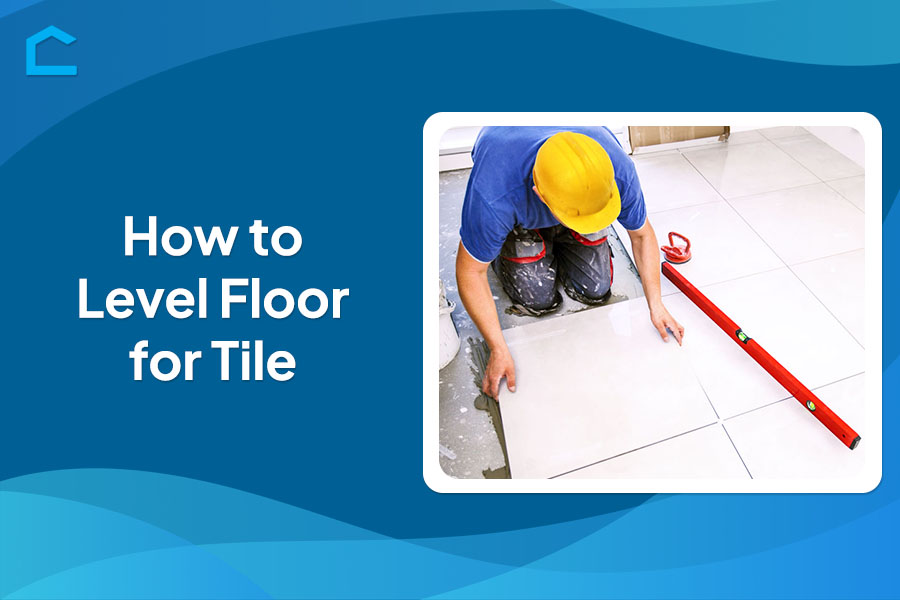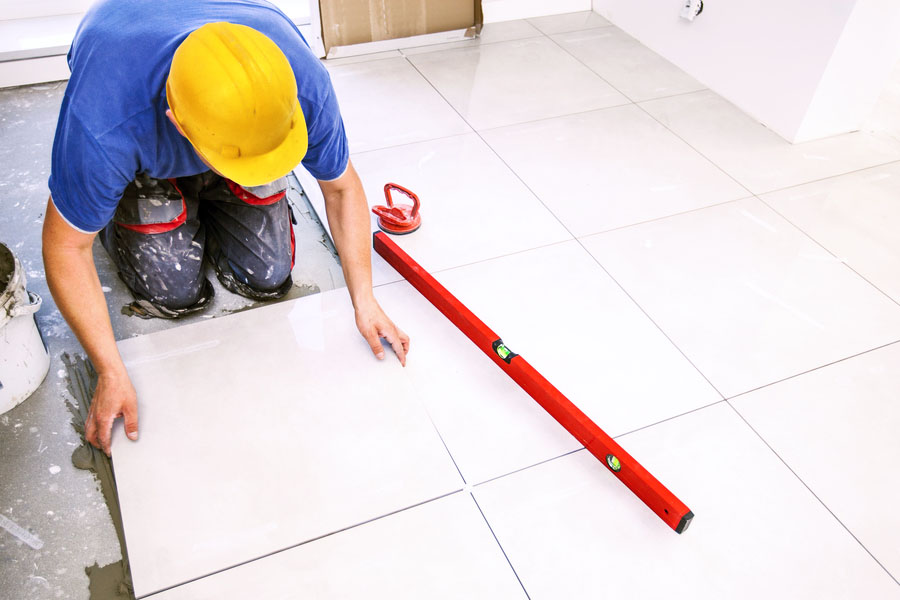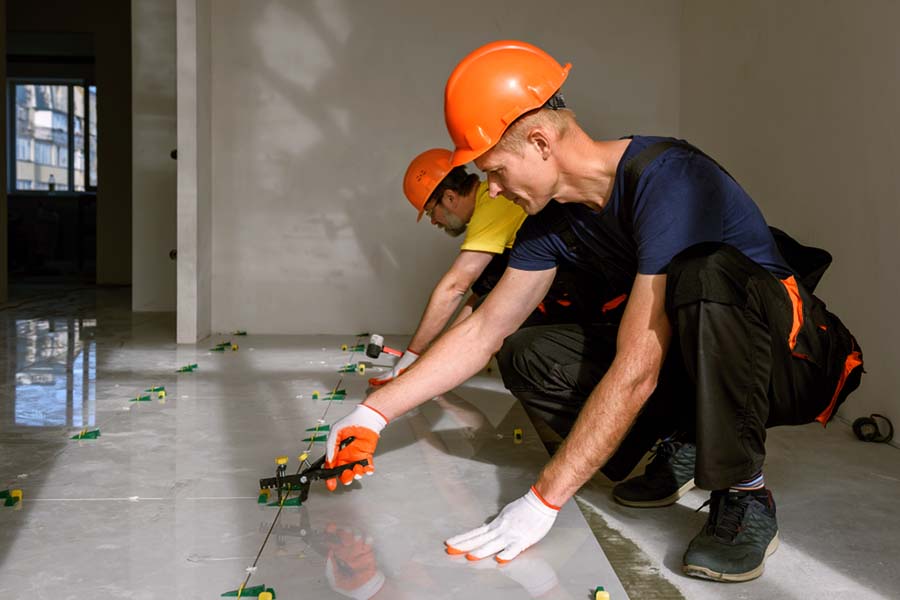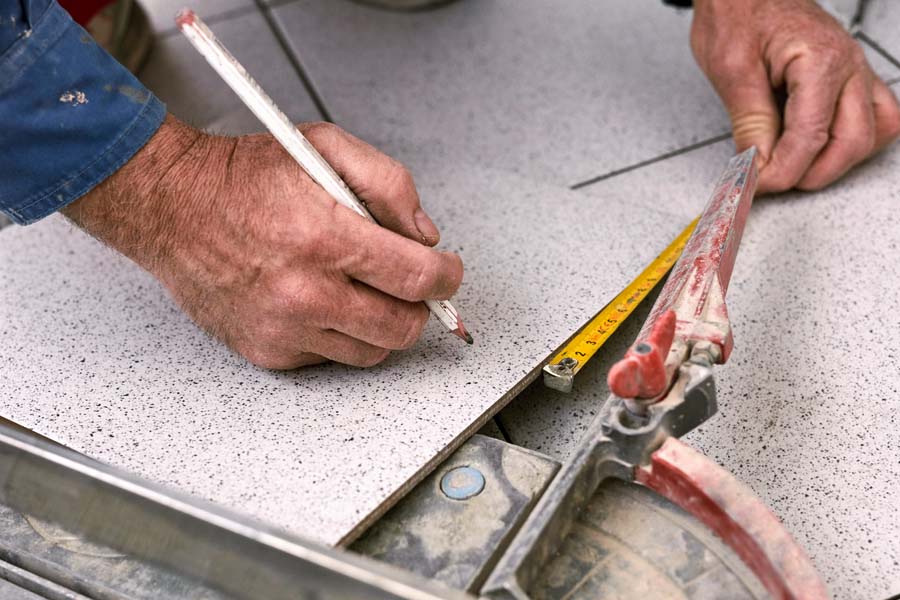How to Level Floor for Tile

Preparing your floor for tile installation is critical in ensuring a successful and long-lasting outcome. Among the many prerequisites, achieving a level surface stands as a foundational requirement. But do you know how to level floor for tile?
In this comprehensive guide, we’ll walk you through the essential steps and techniques for preparing your floor to create a flawless foundation for your tile installation. From identifying the right tools and materials to mastering the art of leveling, we’ll cover everything you need to know.
With our step-by-step guidance, you’ll learn how to assess the condition of your existing floor and how to choose the appropriate leveling materials and apply them correctly. Get ready to transform your uneven floor into a masterpiece.

Source: shutterstock.com / Photo Contributor: Dagmara_K
The Importance of a Level Floor for Tile Flooring
A level floor is essential for tile installation for several reasons, primarily focusing on aesthetics, durability, and tile cracking or lifting prevention. First, a level floor aesthetically ensures the tiled surface’s smooth and uniform appearance. Any inconsistencies in the floor can lead to uneven tile placement, creating an unsightly finish.
Moreover, a level floor contributes to the durability of the tile installation. Uneven surfaces can cause stress points on the tiles, leading to potential cracking or lifting over time, especially in high-traffic areas. A level subfloor provides a stable foundation for the tiles, reducing the risk of damage and prolonging the installation’s lifespan.
Additionally, a level floor helps maintain the tiled surface’s structural integrity, preventing issues such as hollow spots or uneven settling. By ensuring a flat and stable base, the tiles are less prone to movement or displacement, maintaining their integrity and appearance for years to come.
How to Level Floor for Tile
To level a floor for tile, start by cleaning the floor thoroughly and removing any debris. Then, use a leveling compound to fill in any low spots or uneven areas. You should carefully follow the manufacturer’s instructions when mixing and applying the compound.
Once the compound is dry, sand down any high spots to create a smooth surface. Finally, check the levelness of the floor using a long straightedge or level to ensure it’s ready for tile installation.
How to Assess Your Floor’s Condition
First, visually inspect the entire floor area. Check for any high or low spots, cracks, holes, or imperfections that might affect the tile installation. We suggest you pay special attention to areas with heavy foot traffic as they are more prone to wear and tear.
Next, use a reliable moisture meter to test the moisture levels throughout the floor. Excessive moisture in the subfloor can lead to problems like mold growth, tile cracking, and adhesive failure. Make sure the moisture content meets the requirements specified for your chosen tiling products.
Then, determine the type of subfloor material you’re working with, whether it’s concrete, plywood, OSB, or another type. The type of subfloor will dictate the appropriate surface preparation methods and the compatible leveling compounds or underlayments needed for the installation process.
Things you’ll need before starting
Make sure you have all the necessary tools: a long level, trowel, mixing bucket, drill with a paddle, and safety gear such as glasses and gloves. You’ll also need a self-leveling compound to achieve a smooth, level subfloor surface.
Depending on the subfloor’s condition, additional materials like patching compounds or moisture barriers may be needed. It’s crucial to properly prepare the subfloor before installation.
So, we advise you to begin by thoroughly cleaning off any dirt or debris. Then, inspect for cracks or holes and fill or repair them with patching or self-leveling compound.
If you’re installing over concrete, check the moisture levels and address any moisture issues beforehand. The right tools and materials and ensuring the subfloor is clean, level, and dry will set you up for a successful tile flooring installation.
Choosing the right leveling method
How level does a floor need to be for tile? There are several different methods for leveling a floor before installing tile. Choosing the right one depends on the severity of the unevenness and the type of subfloor material.

Source: shutterstock.com / Photo Contributor: DUO Studio
For minor unevenness (1/4″ or less)
You can use a self-leveling underlayment compound to flatten and smooth out the surface. Make sure it’s compatible with the subfloor material. And you can pour or pump it onto the surface.
For moderate unevenness (1/4″ to 1″)
To fix low spots, apply a cement-based floor patch or skim coat. Use a straight plank and level to find high spots and mark them for grinding down.
For severe unevenness (Greater than 1″)
You should first prime the entire surface properly. After that, you can install a self-leveling underlayment. Alternatively, you can use a plywood or cement backer board system to create a new flat layer.
No matter which method you choose, it’s crucial to prepare the surface correctly. Make sure to clean it thoroughly and apply primer. This ensures that the leveling materials adhere properly, creating a durable, level base for your new tile floor.
Using self-leveling compound
- Prepare the subfloor: Properly preparing the subfloor by cleaning, degreasing, and priming/sealing is recommended.
- Mix the compound: Mix the self-leveling compound with the specified amount of cool water using a drill and mixing paddle. Avoid over-mixing to prevent air bubbles.
- Pour and spread: Separate the compound into sections, spread it evenly using a gauge rake, and apply pressure for a smooth finish. Work swiftly before it sets. While you spread, have someone mix more. Utilize extension poles to prevent excessive bending.
- Take breaks: Take breaks as needed to prevent fatigue.
- Follow instructions: Follow the steps carefully, mixing correctly and spreading the compound properly. This will create an ideal smooth, flat surface for installing luxury vinyl flooring.
Installing plywood or backer board
To fix an uneven subfloor, add a new layer of plywood or backer board before putting down luxury vinyl. First, clean up the existing subfloor and smooth out any high spots by grinding them down and filling any low areas. Then, cut the panels to fit, leaving a small gap around the edges.
To make sure everything stays solid, stagger the joints between the rows and fasten the panels securely with nails or screws every few inches. Be careful not to drive the fasteners too far. Tap the panels together tightly and fill any small gaps with a patching compound.
For extra stability, we suggest you use construction adhesive between the old subfloor and the new layer. If you’re working over concrete, add a moisture barrier or underlayment. Following these steps will give you a sturdy base for laying down luxury vinyl flooring without any issues from an uneven subfloor.
Checking levelness after preparation
Before you install luxury vinyl flooring, make sure to thoroughly check that your prepared subfloor is level enough. Any remaining unevenness might cause problems like gaps, peaks, or early wear in your new flooring. So, use a long straight edge or level and place it across the subfloor in different directions.
Look for any gaps or rocking movements underneath, which could indicate high or low spots needing further leveling or patching. An uneven subfloor could cause the vinyl planks or tiles to separate, buckle, crack, or wear out prematurely due to stress points.
As for how level a floor needs to be for tile, a common guideline suggests that the floor should be level within 1/4″ over 10 ft in all directions. Any tips or dips exceeding this 1/4″ tolerance should be addressed before tile installation.
We recommend you take the time to carefully check and address any remaining leveling issues on the prepared subfloor. This crucial step ensures that your luxury vinyl flooring is flawlessly installed, maintaining its beauty for the long term.
Final preparations before tiling
There are a couple of critical final preparation steps before you start laying tile. First, you need to determine if you require a waterproof membrane or underlayment.
Waterproofing membranes are necessary for tiling floors and walls in wet areas such as showers, tubs, and surrounding areas. The membrane stops moisture from seeping through to the subfloor or wall materials.
Next, plan out your tile layout. Measure the room and find the center point. From there, you can lay out your tile rows to ensure they look balanced and minimize small slivers of tile along the edges.
We advise you to position the tiles so cuts are evenly spaced. Use spacers to maintain consistent grout lines between tiles. With proper planning and preparation, you’ll achieve professional-looking results.

Source: shutterstock.com / Photo Contributor: True Touch Lifestyle
Conclusion
Mastering how to level floor for tile is crucial for achieving a stunning, long-lasting tile installation. By understanding the importance of proper floor preparation, you are now well-equipped to create a seamless level surface for your tiles.
We discussed the importance of a level floor for tile flooring, emphasizing its impact on aesthetics, durability, and tile cracking or lifting prevention. Achieving a flat and stable base ensures a visually pleasing and structurally sound tile installation that will last years.
Before starting the tiling process, it’s crucial to complete final preparations. This includes determining the need for waterproofing membranes, planning tile layout, and ensuring proper spacing and alignment.
By following our guidelines, you can transform your uneven floor into a masterpiece, achieving professional-looking results and enjoying the beauty and longevity of your tiled surface.
